Home>Articles>How One Couple Renovated A Gutted Victorian To Suit Their Style
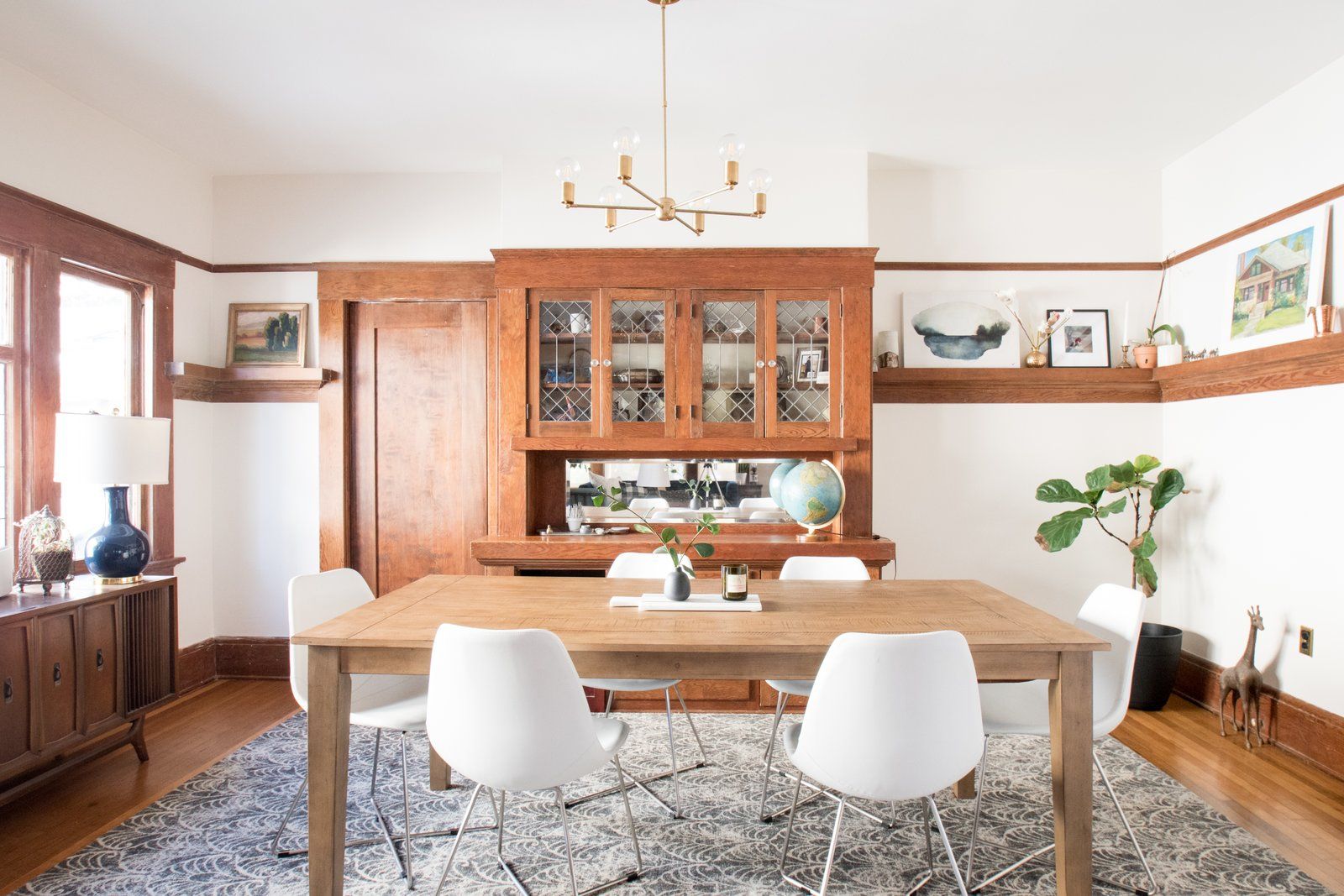

Articles
How One Couple Renovated A Gutted Victorian To Suit Their Style
Modified: October 18, 2024
Read inspirational articles about how one couple transformed a gutted Victorian house into their dream home, showcasing their unique style and renovation journey.
(Many of the links in this article redirect to a specific reviewed product. Your purchase of these products through affiliate links helps to generate commission for Storables.com, at no extra cost. Learn more)
Introduction
Welcome to the inspiring tale of one couple who transformed a dilapidated Victorian house into a stunning and personalized oasis of style. In this article, we delve into the journey of this dynamic duo as they navigated the challenges and triumphs of renovating a gutted Victorian home.
The choice to embark on a renovation project came naturally to this couple, who shared a passion for architecture, design, and the pursuit of creating a space that truly reflected their unique style. Armed with a vision and a shared determination, they set out to find the perfect Victorian house to bring their dreams to life.
This couple understood that a Victorian house would not only provide the perfect canvas for their renovation project, but would also offer a rich history and distinctive character that they could preserve and enhance. The search was an adventure in itself, as they scoured neighborhoods, attended open houses, and enlisted the help of real estate professionals.
After an extensive search, they stumbled upon a neglected Victorian gem that had fallen into disrepair. The house was a blank slate, stripped of its former glory and in desperate need of some tender loving care. It was the ideal project to showcase their passion for restoration and customization.
The first step was to conduct a thorough assessment of the damage and formulate a comprehensive plan for the renovation. This involved enlisting the help of contractors, architects, and other professionals to ensure the restoration was executed with precision and expertise. The couple was determined to strike a balance between preserving the historical integrity of the house while infusing it with their own personal style.
With the foundation laid, it was time to dive into the exciting task of selecting a design style that would guide all their renovation decisions. The couple was drawn to a fusion of modern and traditional elements, seeking a balance between warmth and sophistication in their living space. They carefully curated a collection of design inspirations, drawing from a variety of sources such as magazines, online platforms, and their own unique perspectives.
The restoration process involved restoring and reviving the original features of the house. From intricate moldings and soaring ceilings to stunning fireplaces and ornate banisters, the couple painstakingly brought these elements back to life, ensuring that the house retained its authentic Victorian charm.
As they progressed with the renovation, the couple also seized the opportunity to customize the layout of the house to suit their modern lifestyle. Walls were moved, rooms were reimagined, and new spaces were created to maximize functionality and flow. They wanted their home to be a reflection of their personality, while also catering to their practical needs.
Stay tuned as we explore how this couple transformed the kitchen and dining area, created a cozy and inviting living space, designed dream-worthy bedrooms, renovated the bathrooms, maximized storage solutions, updated the exterior, and added personal touches that made the house truly their own.
Join us on this renovation journey filled with inspiration, creativity, and a deep appreciation for Victorian architecture. Get ready to be captivated by the incredible transformation of a gutted Victorian house into a magnificent home that reflects the unique style and personality of its owners.
Key Takeaways:
- The couple’s meticulous restoration of the original features, careful selection of design elements, and thoughtful customization of the layout resulted in a stunning Victorian home that seamlessly blends historical charm with modern comfort and functionality.
- By infusing personal touches, maximizing storage solutions, and updating the exterior, the couple transformed a neglected Victorian house into a warm and inviting sanctuary that truly reflects their unique style and personality.
Background and Inspiration
Every renovation project has its own story, and the journey of this couple was fueled by their deep appreciation for architecture, design, and the desire to create a home that reflected their personal style and values. With a shared love for Victorian architecture, they embarked on a search for the perfect house to bring their dreams to life.
The inspiration for their renovation project came from a variety of sources. They were drawn to the grandeur and elegance of Victorian homes, with their intricate details, soaring ceilings, and historical significance. They admired the craftsmanship and attention to detail that went into these architectural gems and wanted to be a part of preserving that rich heritage.
Magazines, design websites, and architectural books became a wellspring of ideas and inspiration. They immersed themselves in these resources, gathering images and articles that resonated with their design preferences. They also found inspiration in the work of renowned interior designers who seamlessly blended modern elements with traditional aesthetics.
Additionally, this couple’s personal experiences and travels played a role in shaping their vision. They were inspired by the cozy cafés of Paris with their charming vintage decor, the rustic farmhouses they encountered during their countryside explorations, and the urban lofts they admired for their industrial chic vibe. They aimed to bring together these diverse influences and create a harmonious blend of styles in their renovated Victorian home.
Another major source of inspiration was the desire to create a sanctuary that reflected their values of sustainability and eco-consciousness. They wanted to incorporate green building practices and materials into their renovation, ensuring that their home was not only aesthetically pleasing but also environmentally friendly.
The background of this couple also played a significant role in shaping their renovation journey. Both of them had backgrounds in design and had honed their skills through previous renovation projects. Their passion for creativity and their hands-on approach prepared them for the challenges and decisions they would face throughout the process.
Ultimately, their greatest inspiration came from the house itself – a blank canvas full of potential. The prospect of restoring a neglected Victorian home and breathing new life into it fueled their excitement and determination. They were eager to embark on a journey that would be both challenging and rewarding, transforming a forgotten space into a cherished sanctuary.
In the next section, we will take a closer look at how this couple found the perfect Victorian house to serve as the foundation for their renovation project. Join us as we explore the process of finding and assessing the potential of their dream home.
Finding the Perfect Victorian
The search for the perfect Victorian house was an adventure in itself for this couple. With a clear vision and a passion for historical architecture, they embarked on a quest to find a house that would serve as the perfect canvas for their renovation project.
They scoured neighborhoods known for their Victorian homes, attended countless open houses, and even enlisted the help of real estate professionals who specialized in historic properties. Their search was guided by a checklist of criteria that would ensure their chosen house had the potential to meet their design goals.
Location played a crucial role in their search. They sought a neighborhood with a rich history and a sense of community. They were drawn to areas that had preserved their Victorian charm and retained the architectural character that made these houses so special. Finding a neighborhood with a vibrant cultural scene and convenient amenities was also a priority.
As they explored potential houses, the couple looked for specific architectural features that were indicative of Victorian design. These included prominent gables, intricate trim work, decorative shingles, and stained glass windows. Their shared love for Victorian architecture meant that they could appreciate the beauty and craftsmanship of these details and envision how they could be enhanced during the renovation process.
Of course, they also had to consider the practical aspects of the house. They assessed the square footage, number of bedrooms, and layout to ensure it would accommodate their needs. They wanted a house that would provide ample space for their growing family, as well as flexible areas that could be repurposed for different functions.
After months of searching, they stumbled upon a neglected Victorian house that had fallen into disrepair. It was a diamond in the rough, with its faded exterior and overgrown yard. The couple immediately saw its potential and knew that they had found the perfect project to bring their vision to life.
The house was located in a charming neighborhood known for its well-preserved Victorian homes. It was surrounded by tree-lined streets and had access to parks, schools, and local amenities. The couple fell in love with the sense of community and history that permeated the area, and they knew it was the perfect place to call home.
As they explored the interior of the house, they discovered a time capsule of Victorian charm, albeit in need of some serious attention. The intricate woodwork, original fireplaces, and high ceilings had been hidden beneath years of neglect. It was clear to them that restoring these features would be a labor of love, but well worth the effort.
With a mix of excitement and determination, the couple embarked on their renovation journey. They were ready to revive the beauty of this neglected Victorian and transform it into a home that would honor its history while reflecting their unique style and personality.
In the next section, we will delve into the challenges they faced in assessing the damage of the house and developing a comprehensive plan for the renovation. Join us as we uncover the steps they took to bring new life to this dilapidated Victorian gem.
Assessing the Damage
Upon finding their perfect Victorian house, the couple was met with the stark reality of its condition. Years of neglect and lack of maintenance had taken a toll on the once-grand residence. It was now time to roll up their sleeves and assess the extent of the damage.
The first step was to conduct a thorough inspection of the house with the help of professionals, such as contractors and architects. They wanted to get a comprehensive understanding of the structural integrity and identify any underlying issues that needed immediate attention.
During the assessment, they discovered a range of issues that needed addressing. The roof had numerous leaks, causing water damage in several areas, including sagging ceilings and crumbling plaster. The electrical system was outdated and posed safety hazards. Plumbing fixtures were corroded, and the heating system required an upgrade.
One major concern was the foundation. The house showed signs of settling, with cracks in the walls and uneven floors. The couple enlisted the help of a structural engineer to ensure that the integrity of the foundation could be restored. This involved underpinning and reinforcing the foundation to stabilize the house.
As they continued their assessment, they uncovered hidden surprises. Termites had made their mark on the woodwork, requiring extensive repairs and treatments. The original windows, although beautiful, were in poor condition and needed refurbishment to ensure energy efficiency and functionality.
The couple also discovered that the house had outdated insulation, contributing to inefficient energy use. They decided to incorporate new insulation materials and installation techniques to create a more energy-efficient and comfortable living environment.
Throughout the process, the couple had to balance the restoration of the house’s historical features with necessary upgrades to modernize the space. This meant finding a delicate balance between preserving the original charm and incorporating contemporary elements that would enhance the functionality and comfort of the house.
The assessment phase was eye-opening, and it reinforced the importance of having a comprehensive plan for the renovation. The couple worked closely with their team of professionals to prioritize the repairs and upgrades that needed immediate attention. They developed a detailed timeline and budget, taking into account the extent of the damage and the desired outcome for each area of the house.
Despite the challenges that came with assessing the damage, the couple remained committed to restoring the Victorian beauty hidden beneath the neglect. They saw the potential in each issue they uncovered and envisioned the stunning transformation that awaited them after the renovation.
In the next section, we will explore their meticulous planning process and how they selected a design style that would guide their renovation decisions. Join us as we dive into the exciting journey of turning their dream home into a reality.
Planning the Renovation
With a thorough understanding of the damage and necessary repairs, the couple turned their attention to planning the renovation. This phase was crucial in ensuring that every aspect of the project would be executed smoothly and efficiently.
They began by setting their renovation goals and outlining their vision for each area of the house. They envisioned a home that seamlessly blended modern functionality with the timeless elegance of Victorian architecture. They wanted to create a space that would reflect their personal style while honoring the historical charm of the house.
Next, they assembled a team of professionals, including architects, contractors, and interior designers. These experts played a key role in helping the couple transform their vision into a concrete plan. Collaboration and open communication were paramount as they discussed their ideas, shared inspirations, and worked through challenges together.
One of the first steps in the planning process was developing a detailed timeline. They identified key milestones and set realistic deadlines for each phase of the renovation. This included allowing time for inspections, permit approvals, and unforeseen delays that often came with such extensive projects.
Creating a comprehensive budget was another essential aspect of the planning phase. The couple took into account the costs of materials, labor, permits, and any unexpected expenses that might arise. They prioritized their spending, allocating more resources to critical areas such as structural repairs and preserving the original features of the house.
During this phase, they also researched and sourced the materials needed for the renovation. They focused on finding high-quality products that would enhance the aesthetics and durability of the house. Furthermore, they considered eco-friendly and sustainable options, such as reclaimed wood and energy-efficient fixtures, to align with their commitment to environmental consciousness.
As the planning progressed, they began making decisions about layout changes and room configurations. They worked closely with the architects to ensure that the new layout would maximize space utilization and flow seamlessly between different areas of the house.
The couple also paid attention to the technical aspects of the renovation. They addressed electrical and plumbing upgrades, ensuring that the house would meet modern safety standards and accommodate their needs. They researched innovative technologies that would enhance home automation, energy management, and security.
Throughout the planning phase, the couple remained open to creative possibilities while staying mindful of their budget and timeline commitments. They allowed for some flexibility, understanding that certain design choices might evolve as the renovation progressed.
By the end of the planning phase, the couple had a clear roadmap for the renovation. They had a detailed schedule, a well-defined budget, and a vision that would guide their decision-making throughout the project.
In the next section, we will explore how the couple selected a design style that would capture their unique tastes and create a cohesive look throughout the house. Join us as we uncover the elements that shaped the aesthetic of their renovated Victorian home.
Selecting the Design Style
With the planning phase complete, the couple turned their attention to selecting a design style that would serve as the foundation for their renovation project. They sought a style that would harmoniously blend their personal tastes with the historical charm of their Victorian home.
After extensive research and drawing inspiration from various sources, they settled on a design style that seamlessly merged modern elements with the timeless elegance of Victorian architecture. They envisioned a space that would be sophisticated, inviting, and reflective of their unique personality.
At the heart of their design style was the desire to create a warm and welcoming atmosphere. They wanted their home to be a sanctuary – a place to unwind, entertain, and create lasting memories. To achieve this, they focused on incorporating cozy textures, inviting colors, and comfortable furnishings throughout the house.
The couple gravitated towards a color palette inspired by nature and the Victorian era. Soft, muted tones were chosen as the backdrop for each room, creating a serene and soothing ambiance. They accented the spaces with rich, jewel-toned hues to add depth and a touch of drama.
Incorporating a fusion of old and new was a crucial aspect of their design style. They sought to seamlessly integrate modern elements while preserving the historical charm of the house. Original architectural features, such as ornate moldings and intricate banisters, were carefully restored and became focal points in the overall design.
When it came to furnishings, they focused on selecting timeless pieces that would complement the architecture and bring comfort. They combined vintage finds with contemporary pieces to achieve a harmonious balance. The goal was to create a space that felt both classic and current.
Luxurious fabrics, such as velvets and silks, added elegance and texture to the design. These materials were used for upholstery, drapery, and accent pillows, elevating the overall aesthetic and providing a sense of opulence.
Art and decorative elements played a significant role in the design as well. The couple curated a collection of artwork that reflected their personal tastes and interests. They carefully selected pieces that would not only enhance the aesthetics of the space but also serve as conversation starters and expressions of their unique story.
To add a touch of whimsy and personalization, the couple included meaningful objects, family heirlooms, and cherished mementos as eclectic accents throughout the house. These personal touches brought warmth and authenticity to the design, making the house truly feel like a home.
Throughout the design process, the couple remained mindful of the architectural integrity of the Victorian house. They made careful design choices to highlight its history and character, ensuring that the renovations did not overshadow the original charm that had initially drawn them to the property.
By selecting a design style that incorporated their personal tastes and paid homage to the Victorian era, the couple was able to create a cohesive and inviting aesthetic throughout their renovated home. Their attention to detail and commitment to maintaining the integrity of the house ultimately resulted in a space that beautifully blended old-world charm with contemporary comfort.
In the next section, we will explore how the couple embarked on the journey of restoring and reviving the original features of the Victorian house. Join us as we delve into the intricate process of preserving the historical integrity that made this home truly unique.
Restoring the Original Features
Preserving the historical integrity of their Victorian home was a priority for this couple. They recognized the importance of restoring and reviving the original features of the house to honor its rich architectural heritage and create a truly authentic space.
One of the first steps in the restoration process was to carefully assess the existing architectural elements. They worked with specialists and craftsmen to determine the best approach for preserving and repairing these features. This involved a meticulous examination of woodwork, moldings, fireplaces, and other intricate details that defined the character of the house.
The couple recognized that some elements required delicate restoration, while others needed more extensive repairs. For example, the ornate moldings and trim work had fallen victim to the passage of time and neglect. Skilled artisans were brought in to meticulously repair and replicate these details, ensuring that the original grandeur of the house was restored.
The fireplaces, which served as focal points in several rooms, required special attention. The couple enlisted the expertise of restoration specialists to carefully clean, repair, and reseal the original fireplaces, allowing them to once again become functional and visually stunning features of the home.
Windows, another prominent architectural feature in Victorian homes, were carefully restored. The couple understood the importance of maintaining the authentic charm of the original windows while enhancing their energy efficiency. They collaborated with specialists who meticulously repaired any damaged components and ensured the windows were properly insulated for long-term use.
The flooring was an integral part of the restoration process. The couple was delighted to discover that beneath layers of worn carpet and linoleum, the original hardwood floors were waiting to be unveiled. They enlisted flooring experts to carefully refinish and restore these floors, breathing new life into the space.
To honor the history of the house, the couple aimed to retain as many original features as possible. They made efforts to salvage and restore the original hardware, such as doorknobs, hinges, and locks. When replacement was necessary, they sought out period-specific replicas to maintain the authenticity of the house.
Restoring the original features of the Victorian home required patience and a deep appreciation for its history. The couple understood that this meticulous process was crucial in preserving the timeless beauty and charm that initially captivated them.
Throughout the restoration, the couple directed their efforts towards striking a balance between preservation and modernization. They understood that the house needed to function in a contemporary world while maintaining its historical identity. This approach allowed them to create a space that seamlessly blended old-world charm with modern comfort.
The restoration of the original features was a labor of love and a testament to the couple’s dedication to preserving the history of their Victorian home. The result was a stunning transformation, with the house reclaiming its former grandeur and offering a glimpse into its storied past.
In the next section, we will explore how the couple personalized the layout of the house to suit their modern lifestyle. Join us as we delve into the exciting process of customizing the space to meet their practical needs and reflect their unique vision.
Customizing the Layout
While restoring the original features of their Victorian home was essential, this couple also recognized the importance of customizing the layout to suit their modern lifestyle. They wanted a space that not only honored the historical charm of the house but also functioned in a way that met their practical needs.
They worked closely with architects and designers to reimagine the layout of the house. The goal was to create a space that maximized functionality, flow, and efficiency, all while staying true to the architectural heritage of the Victorian era.
One of the main areas of focus was the kitchen. The couple desired an open-concept kitchen and dining area that would serve as the heart of their home. Walls were removed to create a seamless connection between the kitchen, dining room, and adjacent living spaces. This not only enhanced the flow of the house but also allowed for more natural light to flood the area.
They carefully considered the placement of appliances and the layout of cabinets to optimize storage and create an efficient workspace. High-quality materials were chosen for countertops and cabinetry, combining functionality with a touch of luxury.
To accommodate their growing family, the couple customized the layout to include a dedicated play area for their children. This space was strategically located adjacent to the kitchen, allowing them to keep an eye on their little ones while preparing meals and engaging in daily activities.
Another important consideration was the creation of a functional and inviting living space. The couple wanted a room where they could relax, entertain guests, and enjoy quality time together. They made the decision to combine two smaller rooms to create a spacious and cozy living room with ample seating and a fireplace as a focal point.
The bedrooms were also customized to meet the individual needs of each family member. The couple’s bedroom became a serene retreat with a luxurious ensuite bathroom. The children’s bedrooms were designed to reflect their personalities, with age-appropriate decor and customized storage solutions to accommodate their belongings.
In addition to the interior layout, the couple also made adjustments to the exterior of the house. They added a patio and outdoor seating area, creating an extension of their living space where they could entertain guests and enjoy the beautiful surroundings. Landscaping was tailored to suit their preferences and enhance the curb appeal of the house.
Throughout the customization process, the couple made design decisions that complemented the historical character of the house. They incorporated Victorian-era architectural details into the new layout, seamlessly integrating new and old elements to create a cohesive and harmonious atmosphere.
The customization of the layout allowed this couple to create a home that was not only visually stunning but also perfectly tailored to their needs and preferences. By thoughtfully reimagining the space, they were able to breathe new life into their Victorian home while preserving its historical charm.
In the next section, we will explore how the couple selected a color palette that enhanced the overall aesthetic of their renovated Victorian home. Join us as we discover the importance of color in creating a welcoming and cohesive environment.
Choosing the Color Palette
The color palette played a crucial role in bringing the renovated Victorian home to life for this couple. They carefully considered their options and selected hues that would enhance the overall aesthetic, create a cohesive atmosphere, and evoke a sense of warmth and tranquility.
For the walls, they opted for a palette inspired by the Victorian era, with soft, muted tones as the foundation. These gentle hues provided a soothing and inviting backdrop while allowing the architectural details and furnishings to stand out.
Neutral shades such as creamy whites, warm beiges, and soft greys formed the base colors throughout the house. These understated tones created a sense of calm and sophistication, while also providing a versatile canvas for the couple to infuse pops of color and texture.
As they delved into the design process, the couple introduced jewel-toned accent colors to add depth and visual interest. Rich emerald greens, deep sapphire blues, and vibrant ruby reds appeared in carefully selected furnishings, artwork, and accessories.
Incorporating these bold accents brought a touch of drama and personality to the spaces, while still maintaining a cohesive and harmonious vibe. They were used strategically to draw attention to key architectural features, create focal points, and add a sense of opulence.
The color palette extended beyond the walls and furnishings. The couple paid attention to detail when selecting materials and finishes, ensuring they were in harmony with the chosen hues. For example, they chose hardwood flooring with warm undertones to complement the neutral tones on the walls and provide a seamless flow throughout the house.
In the kitchen, they opted for a combination of light and dark shades, using white cabinetry as a backdrop and incorporating deep, rich tones in the countertops and backsplash. This created contrast and visual interest, while still maintaining a cohesive look within the overall color palette.
The couple also paid attention to the exterior of the house, considering how the color palette would enhance its curb appeal. They opted for a timeless combination of neutral earthy tones, such as warm beige and soft greys, to complement the historical charm of the house and blend harmoniously with the natural surroundings.
The careful selection of colors allowed the couple to create a space that felt welcoming, cohesive, and visually pleasing. The muted yet sophisticated tones provided a serene backdrop that complemented the architectural features and furnishings, while pops of deeper hues added personality and depth to the overall design.
Throughout the renovation process, the couple remained mindful of the balance between historical authenticity and contemporary sensibilities. The chosen color palette was a crucial component in achieving this balance, creating a space that felt both timeless and modern.
In the next section, we will delve into the exciting transformation of the kitchen and dining area, where functionality meets style. Join us as we explore the details of their renovation in these important spaces.
When renovating a gutted Victorian home, consider preserving original architectural details such as moldings, trim, and fireplaces to maintain the historical charm and character of the house.
Revamping the Kitchen and Dining Area
The kitchen and dining area served as the heart of this renovated Victorian home, where functionality met style and culinary delights harmonized with warm gatherings. The couple recognized the importance of creating a space that was not only visually pleasing but also practical and inviting.
They envisioned an open-concept layout that would seamlessly connect the kitchen and dining areas, allowing for effortless flow and interaction between the two spaces. With the help of architects and designers, they carefully planned the layout to optimize functionality and maximize space utilization.
When it came to the kitchen, the couple aimed for a balance between modern convenience and timeless charm. They selected high-quality materials and finishes that would withstand the test of time while creating an elegant and functional space.
White cabinetry formed the foundation of the kitchen design, providing a clean and classic backdrop. The cabinets were carefully thought out to maximize storage space, with a combination of deep drawers and overhead cabinets. They opted for high-quality hardware that added a touch of elegance while ensuring ease of use.
The countertops were chosen with both aesthetics and practicality in mind. They selected durable and visually striking materials such as quartz or granite, which provided a beautiful surface for meal preparation and added visual interest to the space.
A centerpiece of the kitchen was the island, which served as a multifunctional space for both cooking and casual dining. The couple incorporated a sleek and spacious island with ample countertop space, seating, and storage options. It provided a hub for family activities and social gatherings, creating a sense of warmth and connectivity.
Lighting played a crucial role in the design of the kitchen and dining area. They selected a combination of ambient, task, and accent lighting to ensure functionality and enhance the overall atmosphere. Pendant lights above the island and a chandelier above the dining table added an elegant touch while providing ample illumination for both food preparation and dining occasions.
The dining area was designed to be an extension of the kitchen, seamlessly blending with the overall aesthetic and creating a cohesive look. They chose a dining table that complemented the style of the kitchen, opting for a combination of comfort and sophistication with well-crafted seating options.
To enhance the overall ambiance of the dining area, the couple carefully selected lighting fixtures that added a touch of elegance and created a warm and inviting atmosphere. Wall sconces or a statement chandelier were chosen as focal points, adding a sense of glamour and sophistication to the space.
The couple paid attention to the finer details, such as selecting stylish and functional kitchen appliances that seamlessly integrated with the design. They chose energy-efficient models that not only met their practical needs but also helped to reduce their environmental footprint.
Throughout the renovation of the kitchen and dining area, the couple’s attention to detail and commitment to creating a space that was both visually appealing and functional paid off. The result was a seamlessly connected area that became the gathering place for family meals, entertaining guests, and making lasting memories.
In the next section, we will explore the design choices and transformation of the living space. Join us as we unveil the cozy and inviting sanctuary that the couple created in this important area of their renovated Victorian home.
Creating a Cozy Living Space
The living space in this renovated Victorian home was designed to be a cozy and inviting sanctuary, where the couple could relax, entertain guests, and enjoy quality time together. Every design choice was made with the intention of creating a warm and comfortable atmosphere.
The couple sought to strike a balance between retaining the historical charm of the original architecture and infusing the space with modern elements. They carefully selected furnishings, textures, and colors that would complement the Victorian features while creating a cozy and contemporary living area.
One of the key design decisions was to combine two smaller rooms to create a spacious and open living space. This allowed for ample seating arrangements and sufficient room to accommodate guests while preserving the flow and integrity of the Victorian layout.
They chose a mix of comfortable seating options, including plush sofas, cozy armchairs, and ottomans. These pieces were carefully selected to provide both style and comfort, inviting relaxation and conversation.
Texture played a significant role in creating a cozy ambiance. The couple introduced soft fabrics such as velvet, chenille, and faux fur into the space, adding layers of comfort and warmth. These textiles were used in throw pillows, blankets, and rugs, creating a tactile and inviting environment.
To enhance the coziness, they incorporated a working fireplace into the living space. The couple revitalized the original fireplace, restoring it to its former glory. The crackling fire and soft glow added a sense of warmth, creating a focal point that drew people in and encouraged relaxation.
Lighting was carefully considered to create a cozy atmosphere. They incorporated a combination of ambient lighting, such as wall sconces and floor lamps, with task lighting for reading nooks and accent lighting to highlight artwork or architectural features. These layered lighting options allowed for flexibility in setting the mood and added a soft and welcoming ambiance.
Color played a significant role in creating a cozy living space. The couple opted for warm and earthy tones, such as deep blues, rich browns, and warm greys, to create a sense of intimacy and comfort. These colors were carefully balanced with the neutral backdrop of the walls to create a harmonious and inviting environment.
To add personality and charm, the couple incorporated their personal touch through artwork, family photographs, and cherished mementos. These sentimental pieces brought a sense of authenticity and warmth to the space, making it truly feel like a home.
Lastly, the couple incorporated elements of nature into the living space. They introduced indoor plants and natural materials, such as wood and stone, to create a connection to the outdoors and bring a sense of tranquility into the space. These natural elements enhanced the cozy atmosphere and added a touch of serenity.
The result of their design choices and attention to detail was a living space that exuded comfort, warmth, and a sense of relaxation. It became the perfect place to unwind after a long day, curl up with a good book, or gather with loved ones for quality time.
In the next section, we will explore the design and customization of the bedrooms, where the couple created havens of comfort and personal style. Join us as we uncover the details of their transformative renovation in these private spaces.
Designing the Bedrooms
In their renovated Victorian home, the couple paid special attention to designing the bedrooms as havens of comfort, relaxation, and personal style. Each bedroom was carefully curated to reflect the personalities and preferences of its occupants while maintaining a cohesive aesthetic throughout the house.
The couple’s own bedroom became a serene retreat, designed to offer a sense of calm and tranquility. They opted for soothing colors, such as soft greys and muted blues, to create a serene atmosphere conducive to restful sleep. Luxurious bedding, including high-quality linens and plush pillows, added an extra layer of comfort and elegance.
The furnishings in the bedroom were carefully selected to blend sophistication with functionality. They incorporated a mix of classic and contemporary elements with a focus on clean lines and streamlined silhouettes. A cozy reading nook was added, complete with a comfortable armchair and a floor lamp, creating a quiet space for relaxation and solitude.
To add a personal touch, they adorned the walls with meaningful artwork and displayed treasured mementos on carefully curated shelves and dressers. These personal items served as a reminder of cherished memories and added a sense of warmth and familiarity to the space.
For their children’s bedrooms, the couple took a creative approach to bring their individual personalities to life. The rooms were customized to reflect each child’s interests, hobbies, and preferences. They incorporated age-appropriate colors, themes, and decor, allowing their children to express their own unique styles.
The couple focused on creating functional and adaptable spaces for their children. They incorporated versatile furniture pieces, such as convertible beds and modular storage systems, to accommodate changing needs and ensure longevity. The rooms were designed to provide ample storage, creating a clutter-free environment that fostered a sense of calm and organization.
Lighting played an important role in the bedroom design as well. The couple opted for a combination of ambient, task, and accent lighting to provide a variety of lighting options depending on the desired atmosphere. Nightstands were equipped with bedside lamps for reading, and overhead lighting was carefully selected to create a warm and inviting ambiance.
The couple also considered the importance of privacy and personal space within the bedrooms. They installed blackout curtains or blinds to ensure a restful sleep environment and to add an extra layer of privacy when needed.
In all the bedrooms, flooring options were carefully chosen to complement the overall design aesthetic. They opted for plush carpets or hardwood floors with area rugs to add warmth, comfort, and visual interest to the space.
Ultimately, the design of each bedroom was a collaboration between aesthetics and functionality. The couple ensured that the design choices catered to the specific needs and preferences of each occupant while maintaining a cohesive and harmonious aesthetic throughout the house.
In the next section, we will explore the transformation of the bathrooms, where the couple embarked on a journey of renovation to create beautiful and functional spaces. Join us as we uncover the details of their bathroom renovations in the pursuit of comfort and style.
Renovating the Bathrooms
In their quest to create beautiful and functional spaces, the couple dedicated their attention to renovating the bathrooms in their Victorian home. They set out to transform these often-overlooked areas into luxurious retreats that would enhance their daily routines and provide a sense of relaxation and style.
Each bathroom was approached with careful consideration of the unique needs and preferences of its users. The couple aimed to strike a balance between modern convenience and historical charm, integrating contemporary fixtures while preserving the character of the Victorian era.
For the master ensuite, they envisioned a spa-like oasis. They selected high-quality materials, such as natural stone or porcelain tiles, for the floors and walls, creating a sleek and timeless backdrop. The couple chose a calming color scheme, with soft neutrals and soothing tones to promote a sense of tranquility.
To enhance the ambiance, the couple incorporated carefully selected lighting fixtures. They incorporated a combination of task lighting around the vanity and bath area, ambient lighting to create a serene atmosphere, and accent lighting to highlight architectural features or focal points. Dimmer switches were installed to provide flexibility and control over the lighting levels.
The couple paid special attention to the vanities in the bathrooms. They sought out timeless design elements, such as elegant cabinetry and high-quality countertops. The vanities were designed to provide ample storage space and functional features, such as soft-close drawers and built-in organizers for maximum efficiency.
In addition to the master ensuite, the couple renovated the other bathrooms in the house with equal attention to detail. The guest bathroom received a makeover, with the goal of creating a space that was both stylish and welcoming to visitors. They employed similar design principles, incorporating quality materials, stylish fixtures, and a cohesive color palette.
The children’s bathrooms were customized to suit their individual needs. The couple ensured that each space was age-appropriate and conducive to a child’s daily routines. They incorporated playful elements, such as colorful tiles, vibrant wallpapers, and durable fixtures, to create an environment that was inviting and functional.
In all the bathrooms, the couple prioritized comfort and functionality. They incorporated features such as heated floors, towel warmers, and rain showerheads to enhance the overall experience and add a touch of luxury.
Finally, the couple also considered environmental sustainability in their bathroom renovations. They selected fixtures and fittings with water-saving features, such as low-flow toilets and faucets, to reduce water consumption and minimize their environmental impact.
The renovated bathrooms achieved the couple’s vision of creating beautiful and functional spaces that blended modern conveniences with Victorian charm. The bathrooms became private sanctuaries where they could start and end their days with a sense of style, comfort, and relaxation.
In the next section, we will explore how the couple maximized storage solutions throughout the house to ensure a clutter-free and organized living space. Join us as we uncover their innovative approaches to storage in their renovated Victorian home.
Read more: How To Use A Steamer On A Suit
Maximizing Storage Solutions
In their renovated Victorian home, the couple was committed to creating a clutter-free and organized living space. They recognized the importance of maximizing storage solutions to ensure every item had a designated place, allowing for a clean and functional environment.
The couple implemented a variety of clever storage solutions throughout the house, making the most of every available space. They focused on integrating storage seamlessly into the design while considering the unique needs of each area.
In the kitchen, they prioritized functionality and efficiency. They installed custom-built cabinets and drawers, ensuring that every inch of space was utilized effectively. They incorporated pull-out organizers, built-in spice racks, and vertical dividers to optimize storage for cooking utensils, pots, and pans.
Utilizing upper cabinet space, they added additional shelves and adjustable racks to accommodate a range of items, from glassware to small appliances. Additionally, they incorporated a walk-in pantry with designated shelves and storage units for food items, ensuring easy accessibility and optimal organization.
In the living spaces, the couple sought furniture pieces that offered hidden storage options. They selected ottomans with removable tops that revealed hidden compartments for storing blankets, pillows, or other items. They incorporated coffee tables with built-in drawers or shelves, providing convenient storage for magazines, books, and remote controls.
The bedrooms were not exempt from their storage solutions. The couple selected bed frames with built-in drawers or hydraulic lifts, maximizing the space beneath the bed for extra linens, clothing, or seasonal items. They installed customizable closet systems with shelves, hanging rods, and drawers to optimize storage and maintain organization.
The bathrooms were designed with storage in mind. They incorporated vanity cabinets with deep drawers and shelves to accommodate toiletries and towels. They installed recessed medicine cabinets with adjustable shelves, ensuring ample storage for everyday essentials.
In the children’s bedrooms, the couple focused on smart storage solutions to minimize clutter. They integrated modular storage systems with adjustable components to adapt to changing needs as the children grew. They included labeled bins, baskets, and cubbies to help keep toys, books, and clothing organized and easily accessible.
Throughout the house, the couple made innovative use of vertical space. They installed wall-mounted shelves, hooks, and cubbies to make use of empty wall areas for storing and displaying items such as artwork, plants, or decorative objects. This not only added additional storage but also contributed to the overall aesthetics of the space.
The couple recognized the importance of maintaining a clutter-free entryway. They included storage benches or consoles with built-in compartments for shoes, bags, and other frequently used items. Baskets and hooks were included for storing keys, jackets, and accessories, keeping the space organized and welcoming.
In their pursuit of maximizing storage solutions, the couple prioritized functionality and thoughtful design. Every decision was made with the goal of creating a harmonious living space that was both aesthetically pleasing and organized.
In the next section, we will explore the details of updating the exterior of the Victorian home, enhancing its curb appeal and making a lasting impression. Join us as we uncover the transformation of the exteriors in this remarkable renovation journey.
Updating the Exterior
The exterior of this renovated Victorian home underwent a remarkable transformation, enhancing its curb appeal and making a lasting impression. The couple understood the importance of creating an exterior that was not only visually appealing but also in harmony with the historical character of the house and its surroundings.
They started by assessing the existing condition of the exterior, noting areas that needed repair or restoration. The faded paint, weathered trim, and worn-out features were addressed to bring back the charm and elegance that the house once exuded.
Preserving the historical integrity of the architecture was a priority. They enlisted the help of experts in historic restorations to ensure that any repairs and renovations were carried out in a manner that respected the original design. This included careful attention to detail when restoring intricate moldings, ornate banisters, and decorative features.
Color played a significant role in updating the exterior. The couple selected a palette that complemented the historical aesthetic of Victorian homes. Soft, muted tones were chosen for the main body of the house, while bolder hues were used for accent colors. These carefully calibrated colors enhanced the architectural details and brought the house to life.
An important aspect of the exterior update was revitalizing the landscaping. The couple sought to create a harmonious connection between the house and its surroundings. They selected plants and trees that complemented the historical charm of the neighborhood, opting for a mix of both native and ornamental varieties to add texture and color.
Pathways and outdoor living areas were also given attention. The couple installed walkways made of natural materials such as flagstone or brick, lending a timeless and elegant touch to the entrance and outdoor spaces. They created inviting seating areas, incorporating comfortable outdoor furniture and accessories to encourage outdoor enjoyment.
Outdoor lighting played a crucial role in enhancing both the safety and aesthetics of the exterior. The couple strategically placed landscape lighting to highlight architectural features, trees, and pathways, creating a warm and inviting ambiance during the evening hours.
Furthermore, the couple recognized the significance of sustainable design principles when updating the exterior. They incorporated energy-efficient lighting fixtures and selected low-maintenance plantings that required less water and upkeep. These choices not only reduced the environmental impact but also ensured long-term cost savings.
The couple’s commitment to preserving the historical character of the Victorian home while updating its exterior resulted in a beautiful and welcoming façade. It stood as a testament to their dedication to creating an inviting and visually striking presence in the neighborhood.
In the next section, we will explore the final touches and personalization of the renovated Victorian home. Join us as we uncover the details of how the couple added their unique style and personality to make the house truly their own.
Adding Personal Touches
In their renovated Victorian home, the couple took deliberate steps to infuse the space with personal touches that reflected their unique style and personality. They aimed to create a warm and inviting environment that truly felt like home, filled with sentimental items, cherished memories, and special details.
One way they added personal touches was through the selection and display of artwork. They carefully curated a collection of pieces that spoke to their aesthetic preferences and emotional connection. These artworks adorned the walls, creating focal points and adding character to each room.
Family photographs played a significant role in adding a personal touch. The couple displayed cherished memories captured in frames and arranged them throughout the house. These photographs served as constant reminders of their loved ones and the experiences they cherished most.
Handcrafted items and heirlooms also found their place in the renovation. Whether it was an intricately embroidered blanket, a vintage piece of furniture passed down through generations, or a treasured piece of artwork created by a loved one, these items added a sense of history, uniqueness, and sentimental value to the space.
To showcase their interests and passions, the couple integrated hobby-related items and collectibles into the design. Musical instruments, sports memorabilia, or book collections were thoughtfully displayed, creating conversation starters and personalizing the rooms.
Personalized décor items were strategically placed throughout the house to infuse it with their individual style. From customized throw pillows and monogrammed linens to unique decorative accents found during their travels, these details added a personalized touch and made the space their own.
Textiles played a significant role in adding warmth and texture. The couple incorporated cozy blankets, textured rugs, and decorative pillows with unique patterns and fabrics throughout the house. These elements not only added visual interest but also provided a tactile experience and a sense of comfort.
In the outdoor spaces, the couple added personal touches through garden ornaments, customized signs, and patio accessories. Vintage garden benches, weathered planters, and unique sculptures enhanced the charm and reflected their individual taste.
In the shared living areas, the couple created vignettes with carefully selected objects that held personal meaning. They arranged sentimental keepsakes, seashells collected during beach vacations, or souvenirs from cherished travels, forming curated displays that told stories and sparked nostalgia.
Finally, the couple incorporated their personal style into the overall design by mixing and matching elements from different periods or styles. They blended contemporary pieces with vintage finds and antique furniture, resulting in a space that was visually dynamic and uniquely theirs.
By adding these personal touches, the couple transformed their renovated Victorian home into a space that truly reflected their identity and created a warm and welcoming atmosphere. These details made the house feel authentically theirs and enhanced the overall enjoyment of their home.
In the final section, we will conclude our journey through the renovation of this remarkable Victorian home. Join us as we reflect on the achievements, challenges, and lasting satisfaction that comes with turning a dilapidated house into a cherished sanctuary.
Conclusion
The transformation of this dilapidated Victorian house into a cherished sanctuary has been nothing short of remarkable. The journey undertaken by this dynamic couple has been filled with challenges, triumphs, and a shared vision for creating a home that reflects their unique style and personality.
From the painstaking restoration of the original features to the meticulous planning and execution of each renovation phase, the couple has demonstrated their unwavering commitment to preserving the historical character of the house while infusing it with modern comforts and design. They have navigated the complexities of the renovation process with grace, collaborating with a team of experts and making thoughtful design choices each step of the way.
Their attention to detail and the personal touches they have incorporated throughout the house have transformed it into a space that not only showcases their individuality but also truly feels like home. Every room tells a story, adorned with cherished memories, special artworks, and sentimental items passed down through generations.
By customizing the layout to suit their modern lifestyle, they have created a functional space that seamlessly blends old-world charm with contemporary convenience. They have maximized storage solutions, ensuring that the house remains organized and clutter-free. Each room, meticulously designed and adorned with personal touches, exudes warmth, comfort, and a sense of sophistication.
The exterior of the house has been updated to enhance curb appeal, paying homage to the historical significance of the Victorian era while reflecting their personal style. The landscaping, lighting, and details such as the pathways and outdoor seating areas contribute to a welcoming and elegant presence.
Ultimately, this renovation journey is a testament to the vision, commitment, and perseverance of this couple. They have transformed a neglected Victorian house into a cherished sanctuary, a true reflection of their passion for design and their desire to create a home that tells their unique story.
As they settle into their newly renovated Victorian home, the couple can take pride in the knowledge that they have not only preserved a piece of history but also created a timeless and inviting space that will be enjoyed for years to come. Their renovation journey serves as an inspiration to others embarking on their own projects, demonstrating the rewards of taking on a dilapidated space and transforming it with dedication, creativity, and a deep appreciation for architecture, design, and the pursuit of creating a home that truly reflects one’s style and values.
Frequently Asked Questions about How One Couple Renovated A Gutted Victorian To Suit Their Style
Was this page helpful?
At Storables.com, we guarantee accurate and reliable information. Our content, validated by Expert Board Contributors, is crafted following stringent Editorial Policies. We're committed to providing you with well-researched, expert-backed insights for all your informational needs.
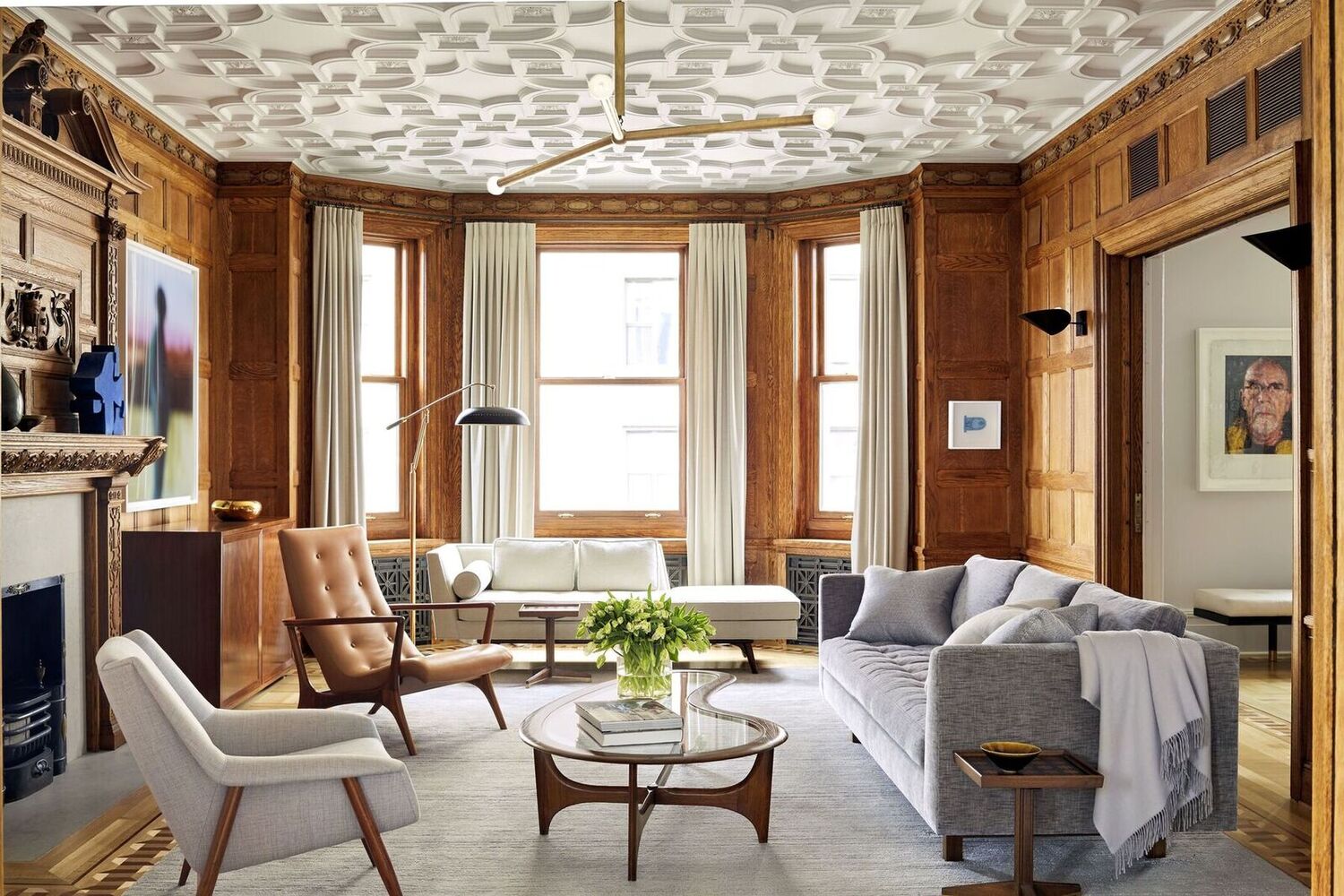

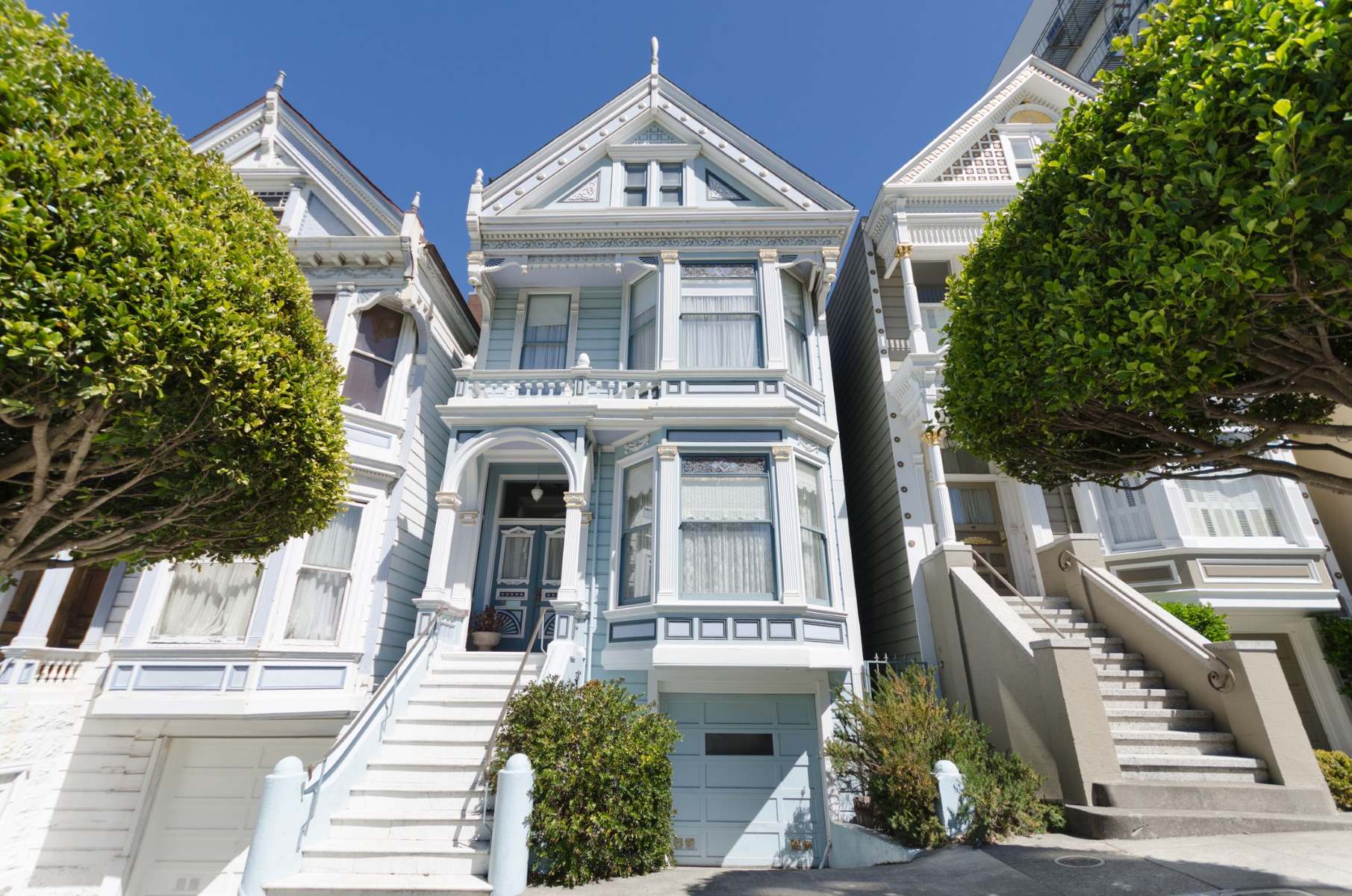
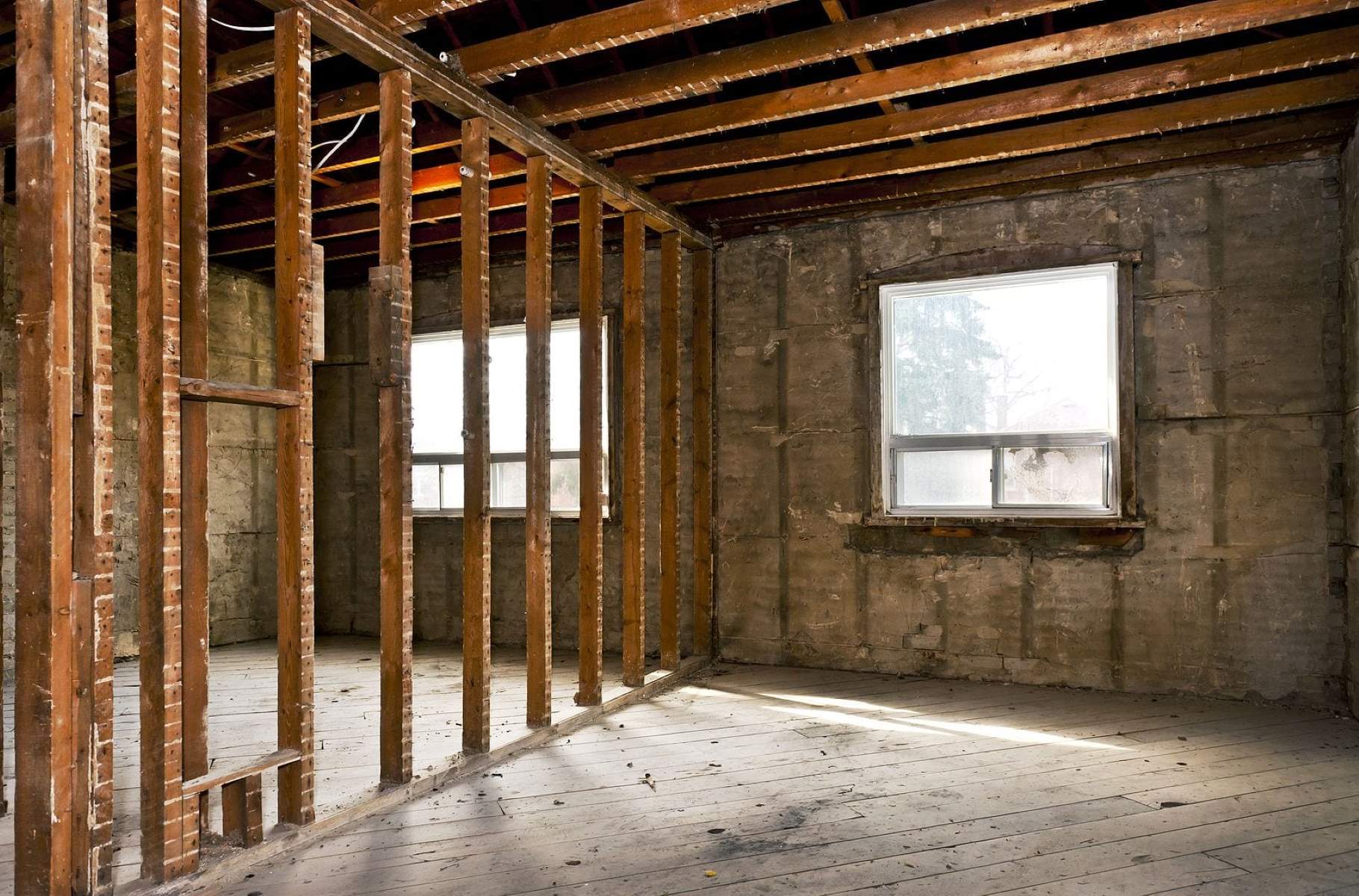
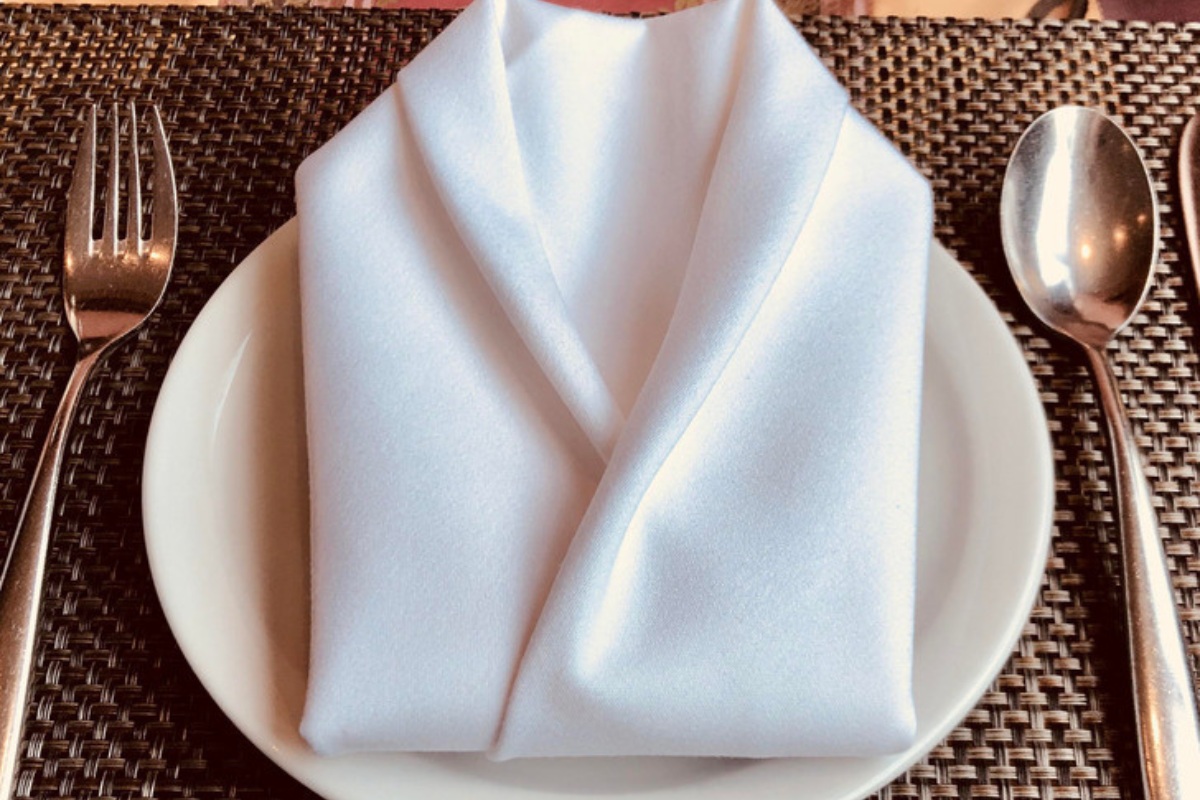

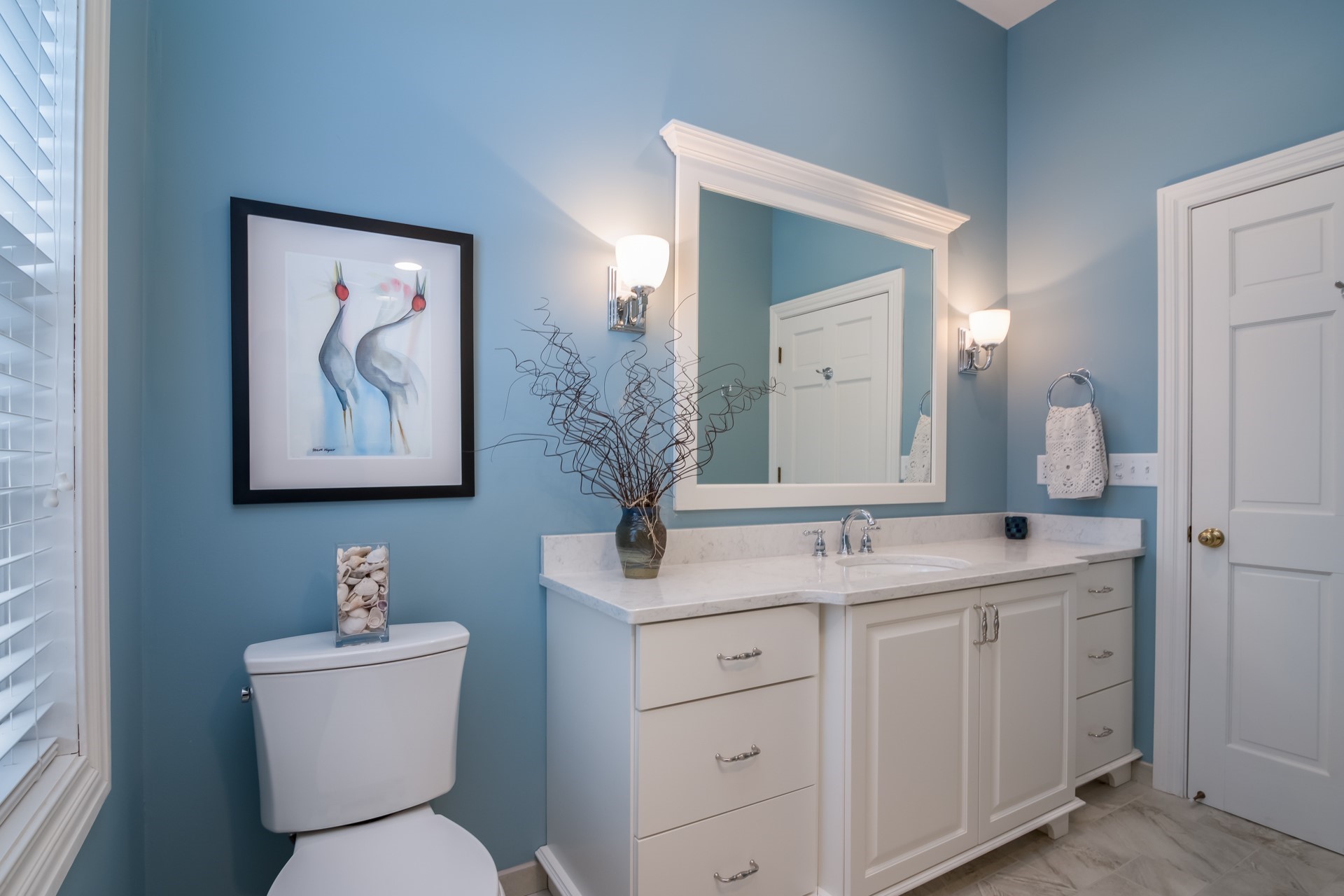

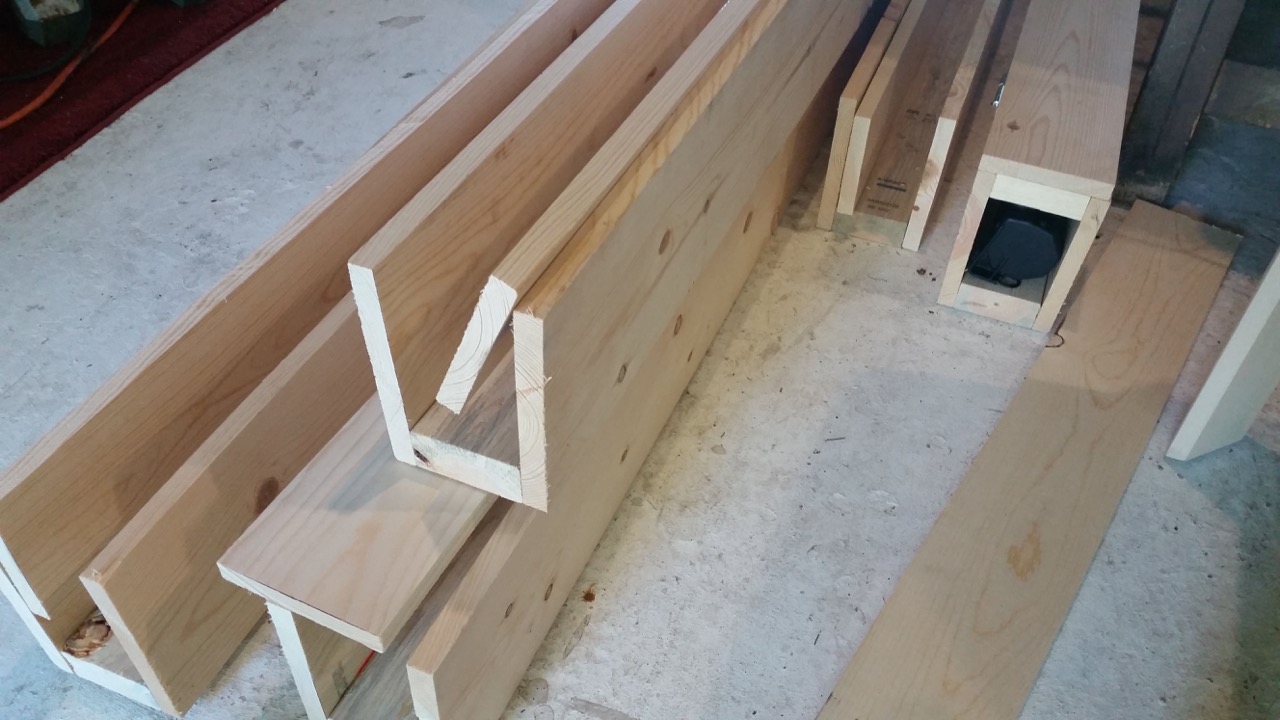
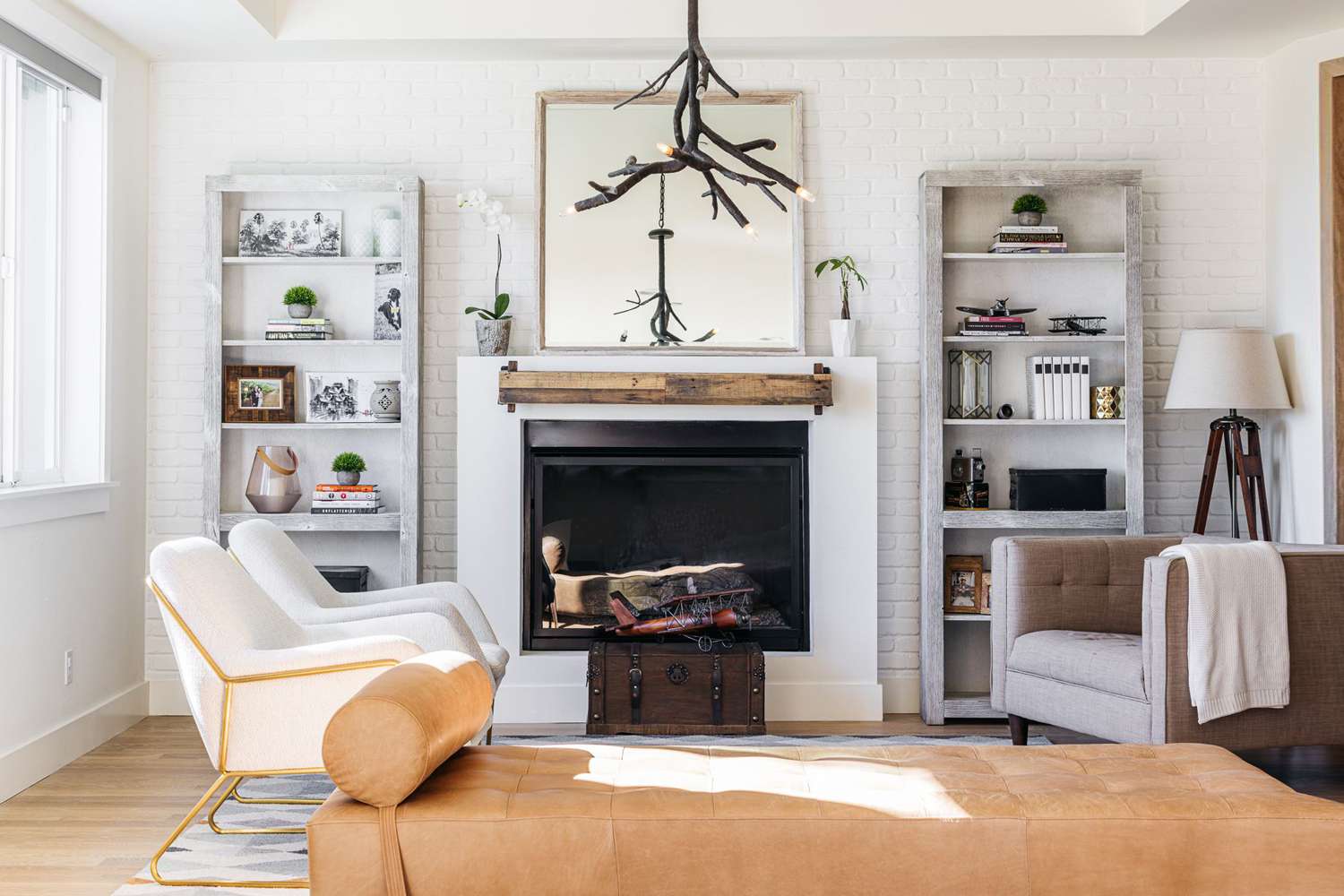
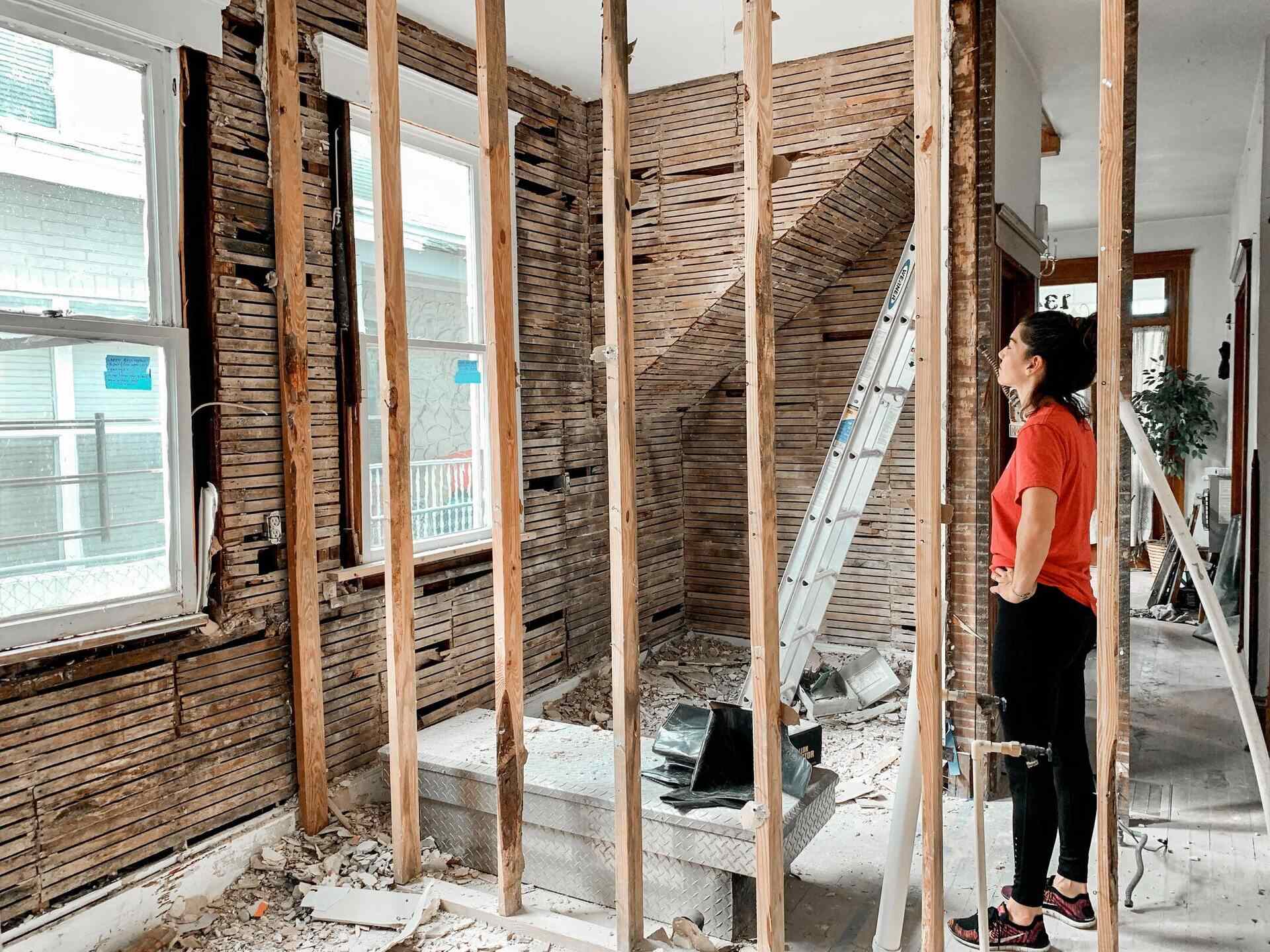


0 thoughts on “How One Couple Renovated A Gutted Victorian To Suit Their Style”